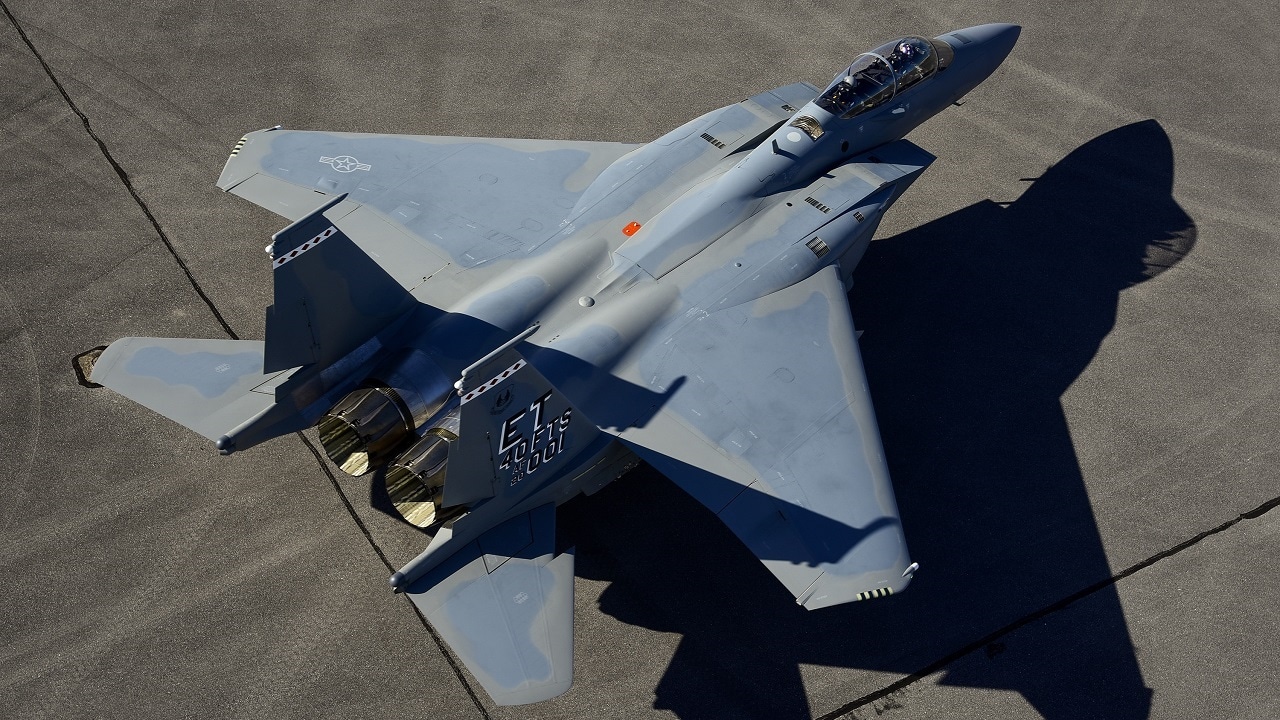The F-15EX Will be a Good Fighter, But It Won’t be a New Strike Eagle: The United States Air Force is forging ahead with the Boeing F-15EX Eagle II fighters, intended to supplant its aging fleet of F-15 Eagles that are due to fly off into retirement.
(Subscribe to Our YouTube Channel Here. 19FortyFive publishes original videos every day.)
The service is currently phasing out its aging F-15C/D models, as some of the aircraft are now approaching 40 years in service.
The F-15EX will enhance the current F-15 mission used in homeland defense.
While the future looks set for the ‘new’ F-15, there does seem a bit of controversy that needs to be sorted out.
More Than an Eagle
Boeing has touted the F-15EX’s capabilities, describing it as a 21st-century evolution of the proven F-15.
The twin-engine, all-weather tactical F-15 has had one of the most successful track records of modern fighters, with more than 100 victories and no losses in aerial combat.
The aircraft’s design also proved flexible enough that an improved all-weather strike derivative, the F-15E Strike Eagle, was later developed and entered service in 1989.
Some experts have even suggested that the U.S. could use more Eagle IIs and fewer F-35s as a show of deterrence to China.
The Air Force isn’t the only interested customer in the F-15EX, as Israel is now preparing to send a formal request to the U.S. for 25 of the fighters.
Most of those combat victories with the F-15 were with Israeli pilots in the cockpit, so it is seen why the Middle East country would want to continue to operate the Eagle well into the future.
F-15EX Problem?
However, The Drive reported this week that the first operational F-15EX Eagle II fighters would not be equipped with conformal fuel tanks (CFTs), citing a newly released Pentagon report.
That lack of CFTs could significantly reduce the F-15EX’s range – and that could certainly be an issue for the U.S. Air Force as well as the Israel Defense Forces (IDF).
CTFs are used on F-15E Strike Eagles, the dual-role fighter designed to perform air-to-air and air-to-ground missions, and have been an option for the F-15 series since the 1980s.
The Israeli Air Force pioneered the use of conformal tanks, which increased the capabilities of the fighter.
The F-15C was the first Eagle to enter service with CFT capability. Initially known as FAST packs (Fuel And Sensor Tactical), each CFT could carry an additional 750 US gallons (2,839.1 L) of fuel while retaining hardpoints for four AIM-7F Sparrow missiles or bombs, some on the FAST packs.
CFTs had several advantages over external drop tanks, notably a reduced aerodynamic penalty, while these do not significantly increase an aircraft’s radar cross-section. An additional advantage of CFTs is that they do not occupy ordnance hardpoints like drop tanks, allowing the aircraft to carry its full payload.
Thanks, but No Tanks?
According to the Pentagon’s Office of the Director of Operational Test and Evaluation (DOT&E), the single-seat F-15EX will be multirole capable, primarily in an air superiority role, for the near term. It also highlighted the F-15EX will be capable of employing a full complement of air-to-air weapons and that it has two additional weapons stations compared to the F-15E. Those two weapon stations were actually tested last November. Units equipped with the F-15EX could provide offensive counterair, cruise-missile defense, and defensive counter-air capabilities, including the escort of high-value airborne assets.
Yet, the report also noted, “the F-15EX will have a very limited capability to employ precision-guided, air-to-surface munitions due to lack of conformal fuel tanks,” while it added, “the lack of CFTs will limit the number of external pods and air-to-ground weapons the F-15EX will be able to employ.”
Initial Phase 1 testing of the Eagle II had been conducted with CTFs, and it is likely that the test data produced will still be representative of the production aircraft equipped with two external 266 F-15EX tanks, as now planned. The report did note that until CFTs are procured and provisioned, “F-15EX’s air-to-ground capabilities will be very limited.”
It would seem that air-to-ground will be a secondary mission for the F-15EX, and without the CTFs, it certainly won’t be a new version of the Strike Eagle.
More: Should Joe Biden Quit?
More: How to Save Joe Biden?
More: Nikki Haley for President? Nope.
Author Experience and Expertise: A Senior Editor for 19FortyFive, Peter Suciu is a Michigan-based writer. He has contributed to more than four dozen magazines, newspapers, and websites with over 3,200 published pieces over a twenty-year career in journalism. He regularly writes about military hardware, firearms history, cybersecurity, politics, and international affairs. Peter is also a Contributing Writer for Forbes and Clearance Jobs. You can follow him on Twitter: @PeterSuciu.

